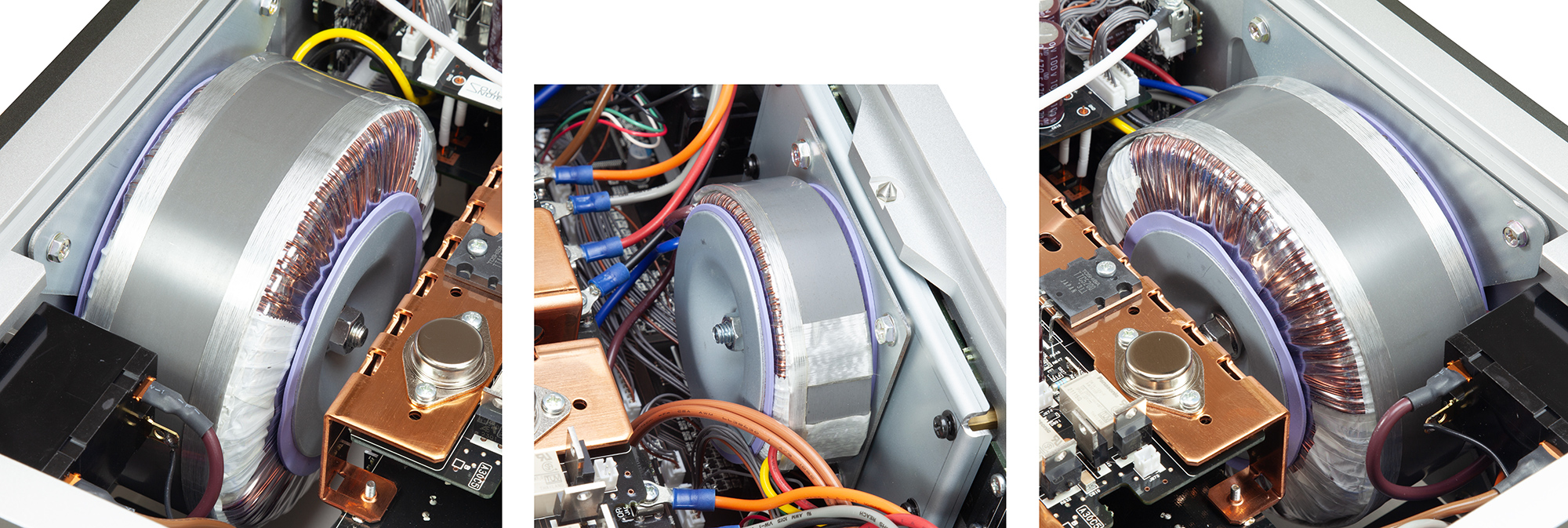Complete separation of left and right channel GNDs
The GND separation technology incorporated in the
P-3 pre-amplifier is applied to this model with a power amplification circuit. Originally, how to ground the GND of a power amplifier that handles high current to the chassis was a key design issue, and there is no precedent for GND non-grounding. However, ungrounding of the power amplifier's enclosure was achieved through simple non-NFB circuits, optimized artwork design, minimization of high current loops, elimination of inductance components, and other factors. This led to the birth of the integrated amplifier A-3 with completely separated left and right GND. Furthermore, by separating the control signals of the selector, volume, protection circuit, and other relays with a photocoupler, we could achieve complete GND separation, taking capacitance and inductive components into consideration. The three-dimensional sound field space and spaciousness are the new frontiers of integrated amplifiers.
4-stage Darlington configuration with super-powerful driver and pre-driver
To drive the TO3(Metal CAN-type) transistor easily, ultra-powerful TO3P transistors are used in the driver as well as in the pre-driver. Ensuring perfect current supply all the way to the bottom end without regard to hfe fluctuation at high currents makes it possible to achieve both deep expressiveness and an exciting groove.
Single push-pull output stage
The output stage uses a single push-pull SEPP circuit with a TO3(Metal CAN-type) bipolar transistor as used in the
M-3. It realizes blur-free music reproduction with correct timing from ultra-low to super-high frequencies. The heart-stirring music reproduction is the result of the single push-pull that does not break the micro time axis accuracy.
Copper bus bar heat sink
A lightweight, compact copper plate is used as the main heat sink. This heat sink also serves as a bus bar for supplying power to the TO3(Metal CAN-type) transistor, and the terminals of the TO3(Metal CAN-type) transistor penetrate the bus bar and are mounted directly on the board underneath. This eliminates wiring, which is a drawback of the TO3(Metal CAN-type) transistor, and helps overcome instability caused by the inductance component, while at the same time avoiding sound quality degradation caused by the insulation sheet dumping on the device. The sound quality effect is also extremely impressive, with a sense of freedom and transparency due to the physical independence of the heat sink from the chassis. Furthermore, in the A-3, the power supply board and amplifier board are connected by a bus bar heat sink, which also serves as a structural component to form a block. It is truly a "four birds with one stone" heat sink.

 Malaysia
Malaysia